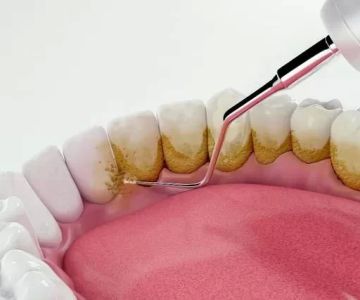How to Protect Your Enamel from Wear and Tear
Enamel is the thin outer layer of your teeth, acting as a protective barrier against everyday wear and tear. It is the hardest tissue in the human body, but that doesn't mean it's invincible. Over time, enamel can wear down due to several factors, leading to sensitivity, cavities, and other dental issues. Understanding how to protect your enamel is crucial for maintaining a healthy and radiant smile. In this article, we'll explore how to protect your enamel from wear and tear, offering practical tips and lifestyle adjustments to keep your teeth strong and durable.
1. What Is Tooth Enamel and Why Is It Important?
Tooth enamel is a mineralized layer that covers the outer surface of your teeth. It is primarily composed of hydroxyapatite, a mineral that makes it incredibly strong and resistant to daily wear. Enamel protects the softer inner layers of the tooth, including the dentin and pulp, from bacteria, acids, and physical wear. Without healthy enamel, your teeth are more susceptible to cavities, sensitivity, and discoloration. Understanding the significance of enamel helps to highlight the importance of preserving it throughout your life.
2. The Causes of Enamel Erosion
Several factors contribute to the gradual erosion of enamel. One of the most common causes is poor oral hygiene, leading to the accumulation of plaque and tartar. Plaque harbors bacteria that produce acids, which can wear down enamel. Diet is another significant factor; acidic foods and drinks like citrus, soda, and wine can weaken enamel over time. Additionally, teeth grinding (bruxism) and acidic reflux can contribute to enamel erosion. Other factors, such as genetics and aging, can also play a role in the thinning of enamel.
3. How to Prevent Enamel Erosion
While some wear and tear on enamel are inevitable, there are steps you can take to prevent excessive damage. Here are some effective strategies:
- Practice Good Oral Hygiene: Brushing your teeth twice a day with fluoride toothpaste and flossing daily can help remove plaque and prevent enamel erosion. Be gentle when brushing, as aggressive brushing can cause enamel wear.
- Limit Acidic Foods and Beverages: Reducing your consumption of acidic foods and drinks can help preserve your enamel. If you do consume acidic items, wait at least 30 minutes before brushing to avoid further damage to softened enamel.
- Drink Plenty of Water: Drinking water throughout the day helps rinse away food particles and acids that can harm enamel. It also promotes saliva production, which helps neutralize acids in the mouth.
- Use a Soft-Bristled Toothbrush: A soft-bristled toothbrush is less abrasive on enamel. Avoid using hard-bristled brushes, as they can scratch and wear away enamel over time.
4. The Role of Fluoride in Protecting Enamel
Fluoride is a key component in strengthening enamel and protecting it from decay. It helps remineralize the enamel by restoring lost minerals and making it more resistant to acids. Most toothpaste contains fluoride, but your dentist may also recommend professional fluoride treatments for added protection. Regular use of fluoride products can help prevent enamel wear and keep your teeth strong.
5. Managing Teeth Grinding (Bruxism)
Teeth grinding, also known as bruxism, can significantly damage enamel, especially if it occurs during sleep. People who grind their teeth are at a higher risk of enamel erosion and tooth sensitivity. If you suspect you grind your teeth, consult your dentist. They may recommend a nightguard to protect your teeth from the pressure and prevent further enamel loss.
6. The Impact of Acid Reflux on Enamel
Acid reflux, or gastroesophageal reflux disease (GERD), occurs when stomach acid flows back into the esophagus and mouth. This can lead to the erosion of enamel, especially on the back teeth. If you experience acid reflux, it's essential to manage it through lifestyle changes, such as avoiding trigger foods, eating smaller meals, and taking medications as prescribed by your doctor. Your dentist can help monitor any damage to your enamel and recommend treatments to protect your teeth.
7. Regular Dental Visits and Professional Care
Visiting your dentist regularly is crucial for maintaining healthy enamel. A dentist can detect early signs of enamel erosion and recommend preventive treatments, such as fluoride treatments or dental sealants, to protect your teeth. Regular cleanings also help remove plaque and tartar buildup, reducing the risk of enamel erosion and decay.
8. What to Do if Your Enamel Is Already Worn Down
If you've noticed signs of enamel wear, such as tooth sensitivity or discoloration, it's essential to seek dental care. Your dentist may recommend various restorative treatments, such as bonding, crowns, or veneers, to restore the function and appearance of your teeth. In some cases, desensitizing toothpaste or fluoride treatments may also be recommended to alleviate discomfort and protect remaining enamel.
In conclusion, protecting your enamel from wear and tear is essential for maintaining good oral health and a beautiful smile. By practicing good oral hygiene, avoiding acidic foods and drinks, using fluoride products, and managing factors like teeth grinding and acid reflux, you can minimize enamel erosion and preserve the strength of your teeth. Regular dental checkups will help you stay on top of your oral health and address any potential issues early on. If you're interested in learning more about how to protect your enamel, be sure to consult with your dentist and explore dental products that can support enamel health.







 Westgate Dental Arts
Westgate Dental Arts Coventry Family Dental
Coventry Family Dental Familia Dental
Familia Dental Dr. Daniel S. Fife, DDS
Dr. Daniel S. Fife, DDS Dentistry At Suburban Square: Michael I. Wollock, DMD
Dentistry At Suburban Square: Michael I. Wollock, DMD Comfort Care Dental
Comfort Care Dental The Importance of Oral Health Education During Pregnancy for a Healthy Pregnancy
The Importance of Oral Health Education During Pregnancy for a Healthy Pregnancy Why Skipping Dental Checkups Can Lead to Bigger Oral Health Problems
Why Skipping Dental Checkups Can Lead to Bigger Oral Health Problems Advantages of Porcelain Dental Restorations
Advantages of Porcelain Dental Restorations Best Tips for Brushing Your Teeth Properly for Healthy Gums: Essential Techniques for Oral Health
Best Tips for Brushing Your Teeth Properly for Healthy Gums: Essential Techniques for Oral Health How Can Diabetes Cause Tooth and Gum Problems? Preventing and Managing Oral Health Issues
How Can Diabetes Cause Tooth and Gum Problems? Preventing and Managing Oral Health Issues Healthy Habits for Promoting Good Oral Health and Hygiene: Tips for a Healthy Smile
Healthy Habits for Promoting Good Oral Health and Hygiene: Tips for a Healthy Smile